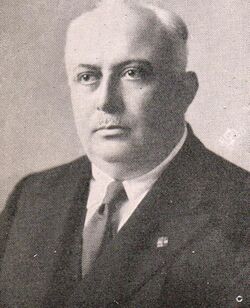Biography:Mario Castoldi
Mario Castoldi (February 26, 1888 - May 31, 1968) was an Italian aircraft engineer and designer.
Biography
Born in Zibido San Giacomo (province of Milan), Castoldi worked for the experimental center of Italian Military Aviation at Montecelio, not far from Rome.
In 1922 he moved to Macchi Aeronautica, where he became famous for designing a series of seaplanes that set world speed records. His first winning plane was the Macchi M.39 seaplane. It was designed in 1925-26 to compete in the Schneider Trophy race of 1926. Powered (like all the Macchi planes from this time) by a Fiat engine it managed a top speed of 396 km/h (246 mph) and won the contest for that year.
For the next four years, Castoldi designed several more racing seaplanes (the M.52, M.52R, and the M.67) which entered the Schneider Trophy races but they lost to the British racers (the Supermarine S.5, and the Supermarine S.6). Castoldi's most famous plane was the Macchi M.C.72 (designed over three years from 1931 to 1933). At first, Castoldi hoped this plane would enter (and win) the Schneider Trophy race of 1931 but the plane could not be ready in time for that contest (the winner was the British Supermarine S.6B). As a result of three consecutive victories for the British, the Schneider races were over.
But development on the M.C.72 continued. Jane's asserts that the Italian dictator Benito Mussolini personally supported the M.C.72 program (most likely as a part of his efforts to gain international prestige for Italy). Despite many setbacks, including the deaths of two test pilots who were flying the plane, the project continued and the plane got faster. In April, 1933 pilot Francesco Agello succeeded in setting a speed record for a seaplane with a speed of 684 km/h. Still, work on improving the plane's speed continued as the design team hoped they could exceed a speed of 700 km/h. After a year and a half, this feat was accomplished as Agello, flying three passes in the M.C.72, attained an average speed of 709 km/h (440 mph) on October 23, 1934. This world speed record lasted for five years – but as a record for a piston-engine seaplane it has never been broken.
After the M.C.72, Castoldi worked on designs for Italian fighters. However, he was limited by the inability of Fiat to provide more powerful engines. Later designs had to rely on German supplied engines. Castoldi was in charge of the design of a series of military fighter that formed the mainstay of Italian fighter force in World War II, specifically the C.200, C.202 and Macchi C.205.
In 1945 Castoldi retreated to private life. He died at Trezzano sul Naviglio in 1968.
This article does not cite any external source. HandWiki requires at least one external source. See citing external sources. (2021) (Learn how and when to remove this template message) |
 |


